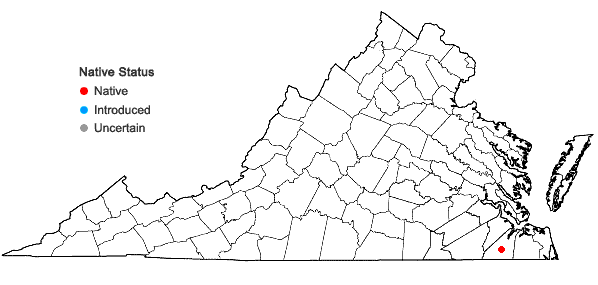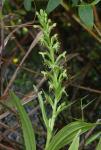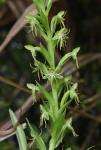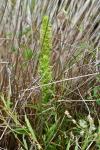Habenaria repens Nuttall

Detail
- Family
- Orchidaceae
- Botanical Name
- Habenaria repens Nuttall
- Common Name
- Water-spider Orchid, Floating Orchid
- Synonym(s)
- Flora of Virginia Name/Status
- Not in Flora of Virginia; discovered after its publication
- Comments
- Discovered new to Virginia in September 2022 during a Master Naturalist field trip in the Great Dismal Swamp. The sighting was posted on iNaturalist as an unknown orchid, but soon identified from the photos by a Virginia Natural Heritage Program biologist. A subsequent field survey by Natural Heritage biologists revealed about 25 reproductive plants, dozens of smaller plants, and hundreds of tiny seedlings at the site. Habenaria repens ranges from Central and South America to the southeastern U.S. Coastal Plain and occurs with regularity north to east-central North Carolina. It appears to be on a northward move, with very recent records from the Pasquotank River upstream of Elizabeth City and not far from the state line.
This orchid had been previously reported from Virginia without verification. A Grimes collection (#4128) from a wooded swamp along the Chickahominy River south of Lanexa (New Kent County) was reported by Erlanson (1924), but was later determined by Edgar Wherry to be a depauperate specimen of Platanthera lacera. Another report by Merriman (1930) from the Richmond area was based on a specimen deposited at US and identified by Paul C. Standley; that specimen has not been located and is also suspected of being misidentified, in addition to being phytogeographically unlikely.
- Habitat
- Open, marshy ditch in the vicinty of Lake Drummond in the Great Dismal Swamp National Wildlife Refuge. The site is within a 5,600 acre area that was mostly deforested by wildfire in 2008 and remains open. The plants grow on floating organic mats with Ludwigia leptocarpa, Sacciolepis striata, Bidens discoidea, Juncus effusus, and Scirpus cyperinus, with the larger flowering plants growing out of sedge or rush tussocks.
- Native Status
- Native
To save this map, right-click (control-click for Mac users) on the map and choose "Save Image As...".


